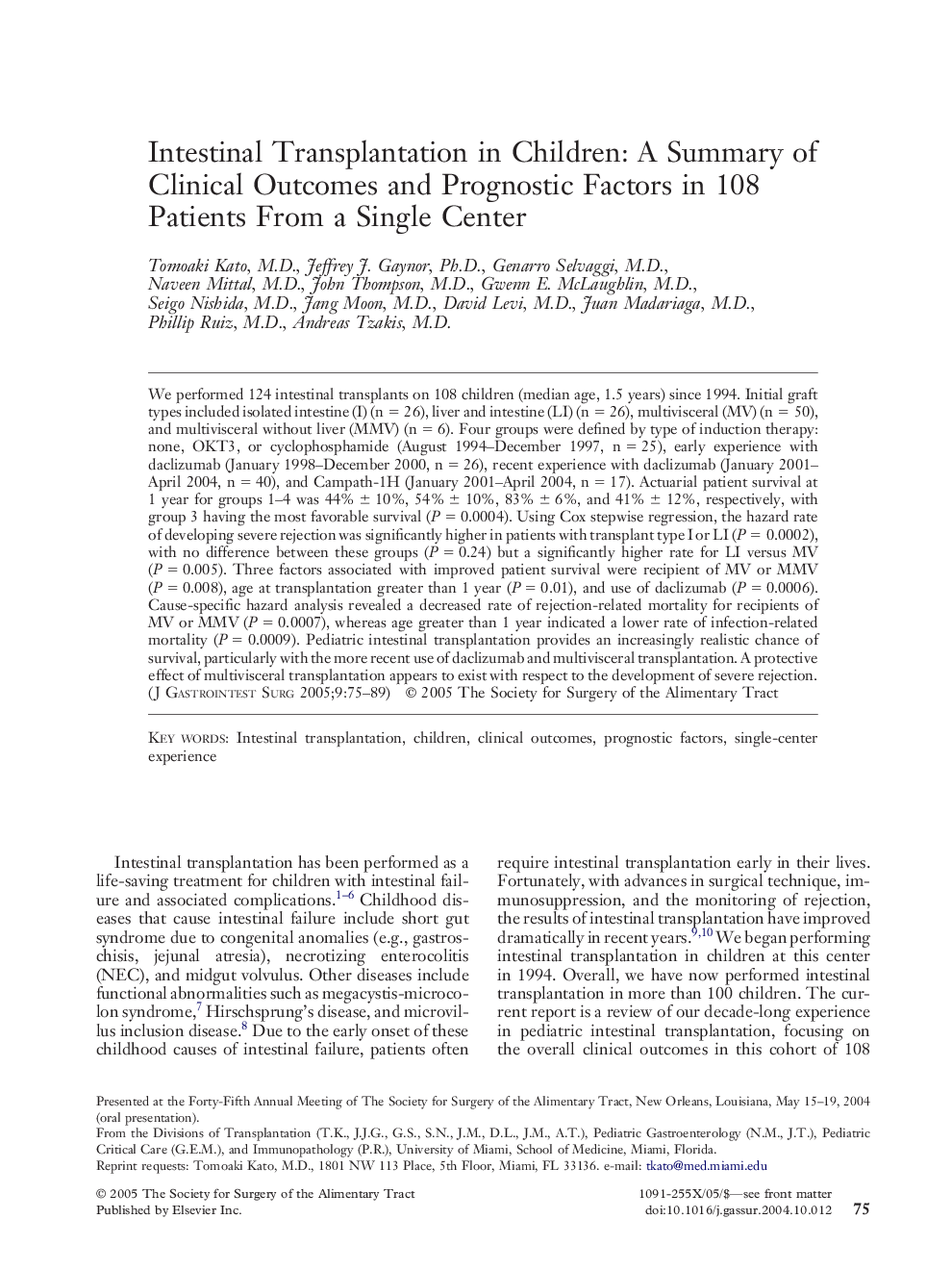| Article ID | Journal | Published Year | Pages | File Type |
|---|---|---|---|---|
| 9401340 | Journal of Gastrointestinal Surgery | 2005 | 15 Pages |
Abstract
We performed 124 intestinal transplants on 108 children (median age, 1.5 years) since 1994. Initial graft types included isolated intestine (I) (n = 26), liver and intestine (LI) (n = 26), multivisceral (MV) (n = 50), and multivisceral without liver (MMV) (n = 6). Four groups were defined by type of induction therapy: none, OKT3, or cyclophosphamide (August 1994-December 1997, n = 25), early experience with daclizumab (January 1998-December 2000, n = 26), recent experience with daclizumab (January 2001-April 2004, n = 40), and Campath-1H (January 2001-April 2004, n = 17). Actuarial patient survival at 1 year for groups 1-4 was 44%±10%, 54%±10%, 83%±6%, and 41%±12%, respectively, with group 3 having the most favorable survival (P = 0.0004). Using Cox stepwise regression, the hazard rate of developing severe rejection was significantly higher in patients with transplant type I or LI (P = 0.0002), with no difference between these groups (P = 0.24) but a significantly higher rate for LI versus MV (P = 0.005). Three factors associated with improved patient survival were recipient of MV or MMV (P = 0.008), age at transplantation greater than 1 year (P = 0.01), and use of daclizumab (P = 0.0006). Cause-specific hazard analysis revealed a decreased rate of rejection-related mortality for recipients of MV or MMV (P = 0.0007), whereas age greater than 1 year indicated a lower rate of infection-related mortality (P = 0.0009). Pediatric intestinal transplantation provides an increasingly realistic chance of survival, particularly with the more recent use of daclizumab and multivisceral transplantation. A protective effect of multivisceral transplantation appears to exist with respect to the development of severe rejection.
Related Topics
Health Sciences
Medicine and Dentistry
Surgery
Authors
Tomoaki M.D., Jeffrey J. Ph.D., Genarro M.D., Naveen M.D., John M.D., Gwenn E. M.D., Seigo M.D., Jang M.D., David M.D., Juan M.D., Phillip M.D., Andreas M.D.,
